ANGLO-SAXON BRONZE BUCKET WITH HUNTING SCENES LATE 5TH-6TH CENTURY A.D. 8 5/8 in. (523 grams, 22 cm wide). Fragmentary vessel, cylindrical in form with lateral D-shaped lugs at the rim, each pierced to accept a bronze drop-handle with returned ends; the outer face with decorative frieze executed in pointillé technique consisting of a hunting scene: (1) a nude male with right arm raised to wield a spear overarm, left arm hidden behind a lenticular shield with pointed boss, with a cloak billowing from the left shoulder and wearing calf-length boots, advancing towards (2) a panther with densely spotted pointillé body, in rampant pose with s-curved tail, raised forepaws and with a curled tree behind the body, attacking (3) a nude male similarly equipped to (1), with head turned to the rear, wielding a sword or large knife in his right hand, following (4) another nude male with a cloak, shield and knife which he plunges into the throat of (5) a bear attacking to the left with forelegs raised, its rounded head with small lobed ears while to its rear stands (6) a male with shield raised and cloak billowing, right hand raised holding a rounded trefoil item (perhaps a net), and to his rear stands (7) a nude male with cloak, shield and spear which he thrusts towards (8) the neck of an attacking gryphon, winged, with an erect mane and beaked head in leaping pose behind (1); the figures all executed in pointillé style with pellets for the eyes, navel and nipples; detached base plate, undecorated but showing signs of tinning. [No Reserve] PROVENANCE: Found East Anglia, believed Cambridgeshire, UK. From a collection acquired on the UK art market from various auction houses and collections mostly before 2000. From an important Cambridgeshire estate; thence by descent. Accompanied by a copy of Drandaki, A., "ΥΓΙΕΝΩΝ ΧΡΩ KYPI(E)" A Late Roman brass bucket with a hunting scene. LITERATURE: See Mango, Mango, Evans & Hughes, A 6th century Mediterranean bucket from Bromeswell Parish, Suffolk, in Antiquity 63, 1989, pp.295-311; Carver, M., Sutton Hoo. A Seventh Century Princely Burial Ground and its Context, London, 2005, p.485-7; Drandaki, A., "ΥΓΙΕΝΩΝ ΧΡΩ KYPI(E)" A Late Roman brass bucket with a hunting scene published on Academia.edu. FOOTNOTES: The vessel is of an unusual type: three have been found in Turkey, Italy and Spain, three in England (excluding the present examples) and three others have unknown findspots; this find brings the total of known examples to ten. The rarity of these vessels indicates the high status of their owners. Each of these buckets is decorated with a hunting frieze and most have an inscription in early medieval Greek. Their manufacture is so similar that it is thought that they were produced at a single workshop in the Eastern Empire, possibly at Antioch, in the 6th century AD (Drandaki, n.d.). Their exact use is not certain, but since several of the inscriptions refer to 'good health' this suggests a domestic setting related to bathing. The rounded object held by figure (6) is clearly based on a similar rounded clump which appears on the vessel in Benaki Museum (beneath the word ' KAΛOI') where it is more convincingly executed with a hatched fill (Drandaki, p.39). Only three examples of this type of vessel are previously known from England: one from Bromeswell, Suffolk, within 1 km of the Sutton Hoo cemetery, found in preparatory work for the Sutton Hoo Visitor Centre; one from Chessell Down, Isle of Wight, where the bucket was part of a rich female grave excavated in the 19th century; one from Breamore, Hampshire, found by metal-detectorist, and excavated by Hampshire County Council's archaeology team who discovered that the grave in which it was found formed part of an important early Anglo-Saxon cemetery. The excavation was filmed by Channel 4's Time Team in August 2001; the cemetery held six more burials with bronze containers, though none as grand as this Byzantine example. CONDITION
ANGLO-SAXON BRONZE BUCKET WITH HUNTING SCENES LATE 5TH-6TH CENTURY A.D. 8 5/8 in. (523 grams, 22 cm wide). Fragmentary vessel, cylindrical in form with lateral D-shaped lugs at the rim, each pierced to accept a bronze drop-handle with returned ends; the outer face with decorative frieze executed in pointillé technique consisting of a hunting scene: (1) a nude male with right arm raised to wield a spear overarm, left arm hidden behind a lenticular shield with pointed boss, with a cloak billowing from the left shoulder and wearing calf-length boots, advancing towards (2) a panther with densely spotted pointillé body, in rampant pose with s-curved tail, raised forepaws and with a curled tree behind the body, attacking (3) a nude male similarly equipped to (1), with head turned to the rear, wielding a sword or large knife in his right hand, following (4) another nude male with a cloak, shield and knife which he plunges into the throat of (5) a bear attacking to the left with forelegs raised, its rounded head with small lobed ears while to its rear stands (6) a male with shield raised and cloak billowing, right hand raised holding a rounded trefoil item (perhaps a net), and to his rear stands (7) a nude male with cloak, shield and spear which he thrusts towards (8) the neck of an attacking gryphon, winged, with an erect mane and beaked head in leaping pose behind (1); the figures all executed in pointillé style with pellets for the eyes, navel and nipples; detached base plate, undecorated but showing signs of tinning. [No Reserve] PROVENANCE: Found East Anglia, believed Cambridgeshire, UK. From a collection acquired on the UK art market from various auction houses and collections mostly before 2000. From an important Cambridgeshire estate; thence by descent. Accompanied by a copy of Drandaki, A., "ΥΓΙΕΝΩΝ ΧΡΩ KYPI(E)" A Late Roman brass bucket with a hunting scene. LITERATURE: See Mango, Mango, Evans & Hughes, A 6th century Mediterranean bucket from Bromeswell Parish, Suffolk, in Antiquity 63, 1989, pp.295-311; Carver, M., Sutton Hoo. A Seventh Century Princely Burial Ground and its Context, London, 2005, p.485-7; Drandaki, A., "ΥΓΙΕΝΩΝ ΧΡΩ KYPI(E)" A Late Roman brass bucket with a hunting scene published on Academia.edu. FOOTNOTES: The vessel is of an unusual type: three have been found in Turkey, Italy and Spain, three in England (excluding the present examples) and three others have unknown findspots; this find brings the total of known examples to ten. The rarity of these vessels indicates the high status of their owners. Each of these buckets is decorated with a hunting frieze and most have an inscription in early medieval Greek. Their manufacture is so similar that it is thought that they were produced at a single workshop in the Eastern Empire, possibly at Antioch, in the 6th century AD (Drandaki, n.d.). Their exact use is not certain, but since several of the inscriptions refer to 'good health' this suggests a domestic setting related to bathing. The rounded object held by figure (6) is clearly based on a similar rounded clump which appears on the vessel in Benaki Museum (beneath the word ' KAΛOI') where it is more convincingly executed with a hatched fill (Drandaki, p.39). Only three examples of this type of vessel are previously known from England: one from Bromeswell, Suffolk, within 1 km of the Sutton Hoo cemetery, found in preparatory work for the Sutton Hoo Visitor Centre; one from Chessell Down, Isle of Wight, where the bucket was part of a rich female grave excavated in the 19th century; one from Breamore, Hampshire, found by metal-detectorist, and excavated by Hampshire County Council's archaeology team who discovered that the grave in which it was found formed part of an important early Anglo-Saxon cemetery. The excavation was filmed by Channel 4's Time Team in August 2001; the cemetery held six more burials with bronze containers, though none as grand as this Byzantine example. CONDITION

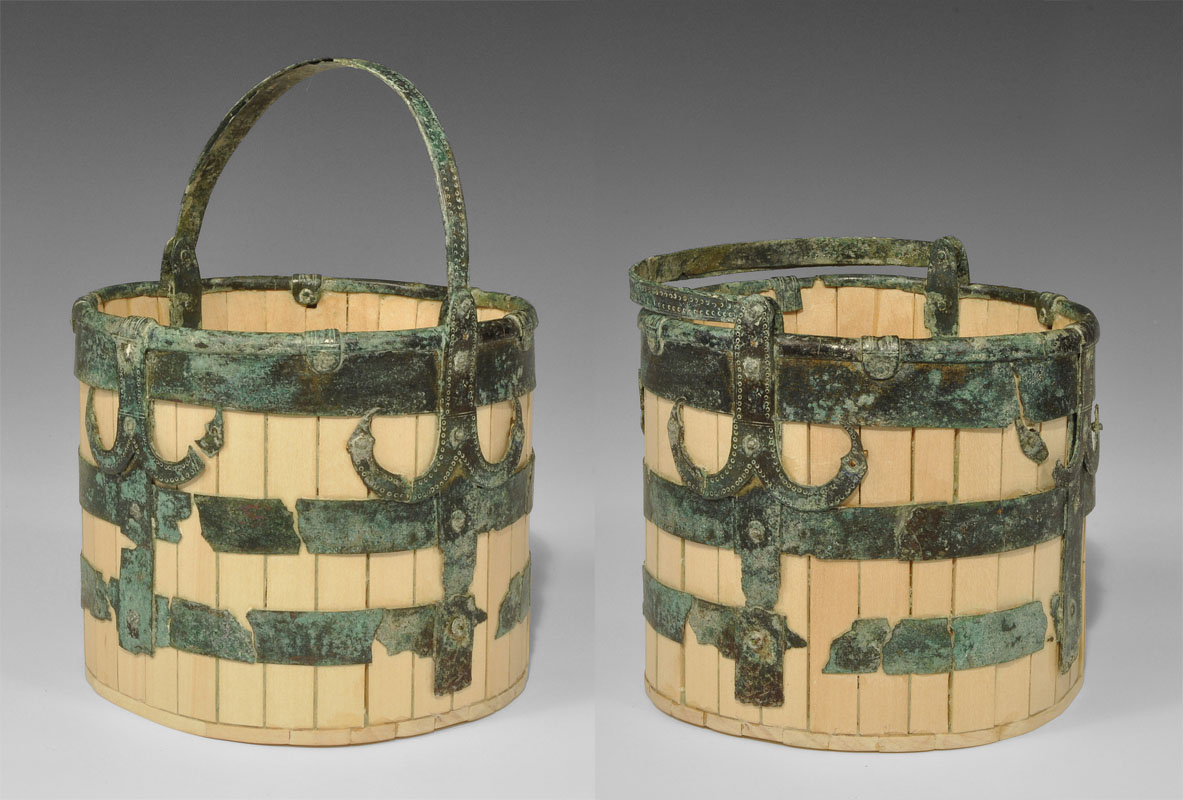
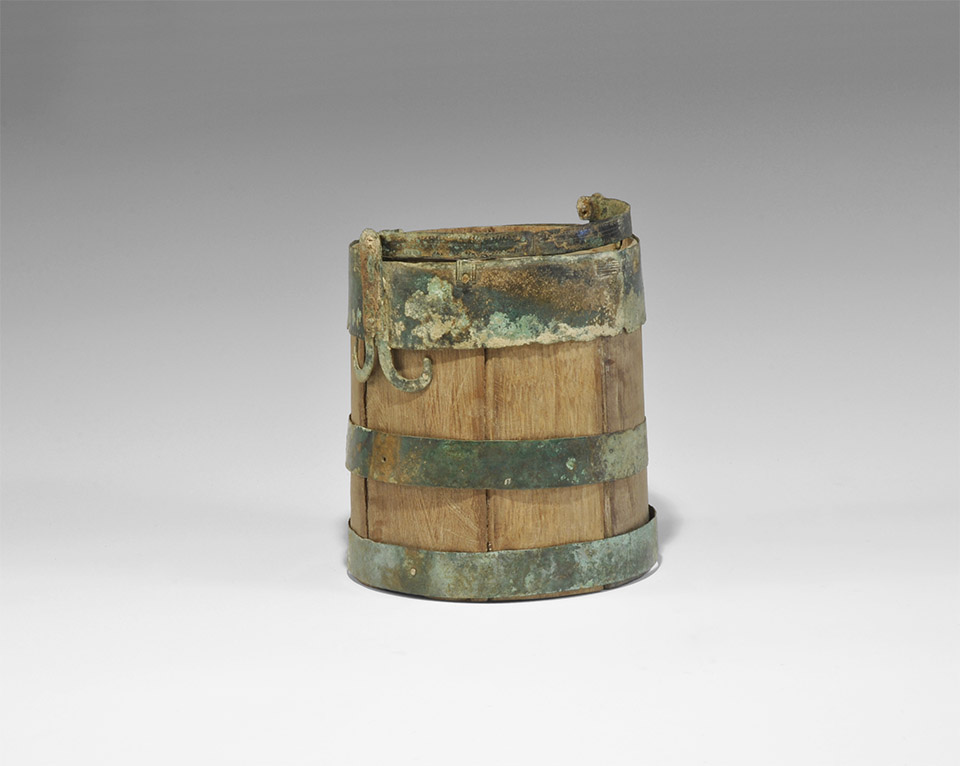
.jpg)
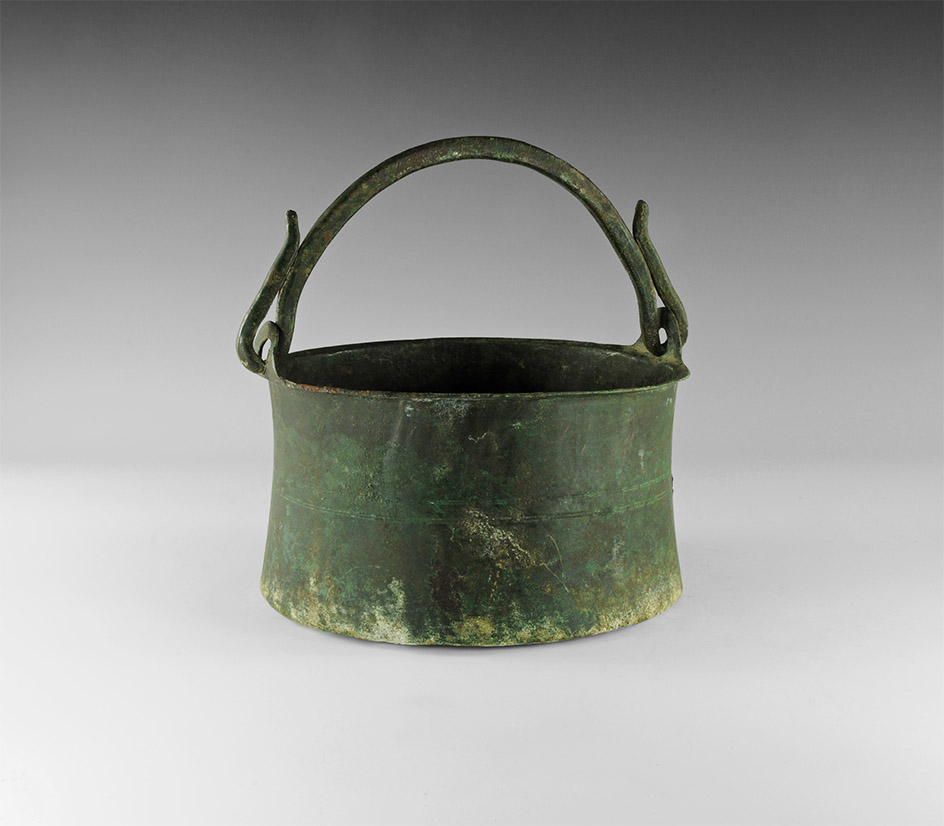
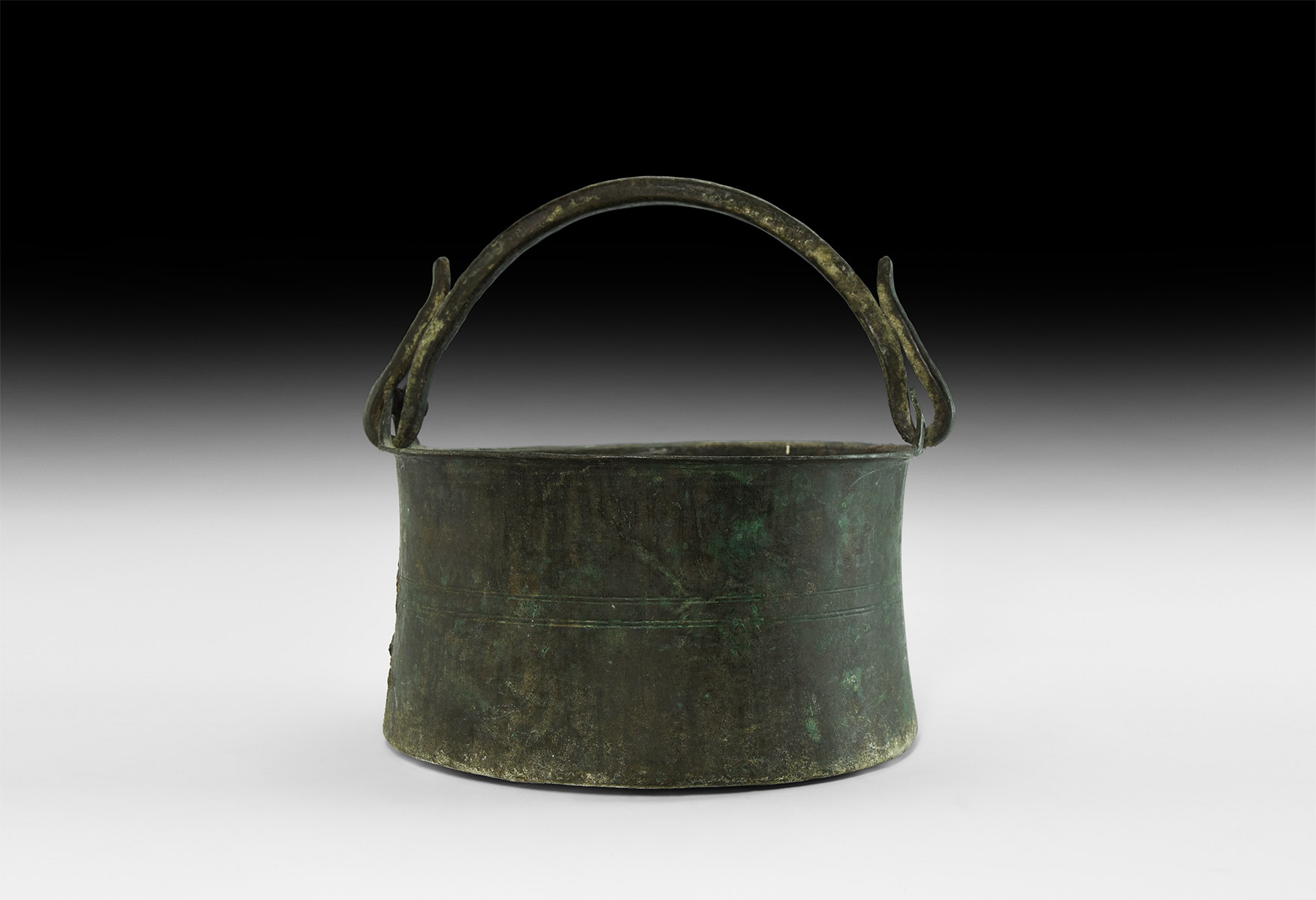
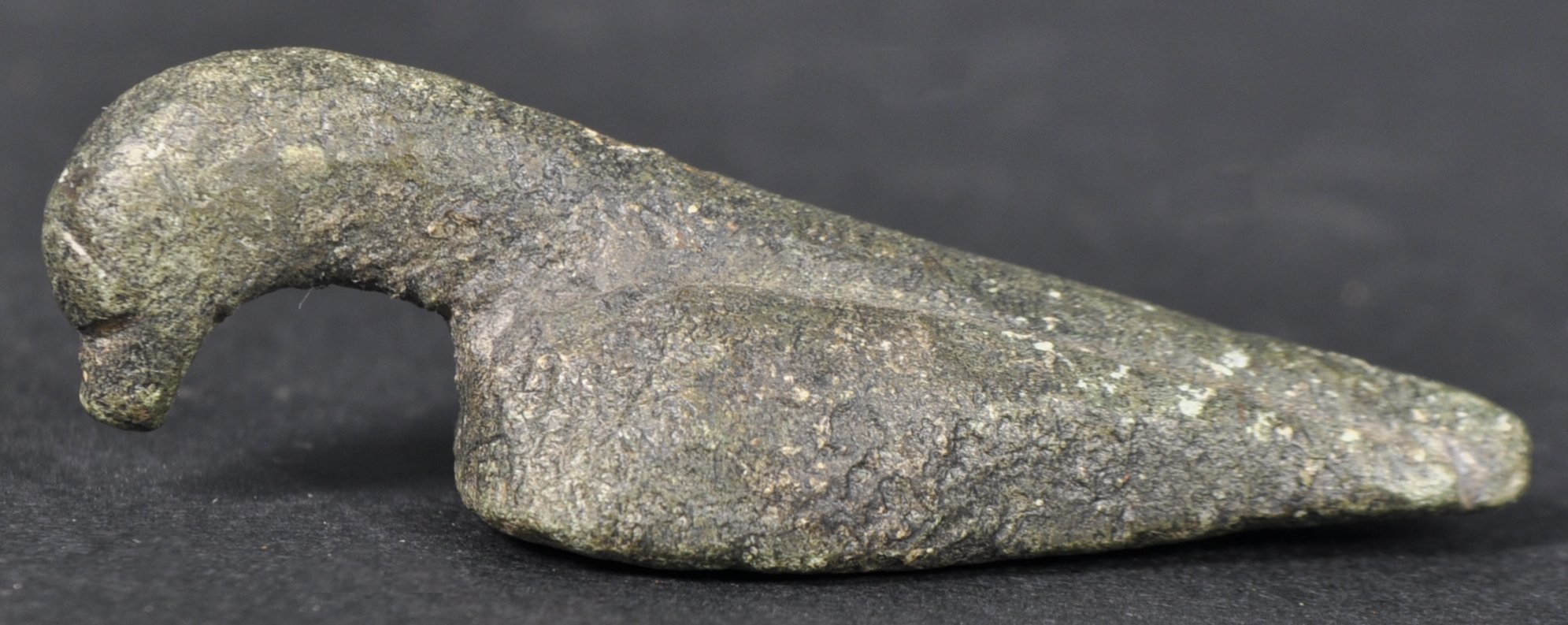
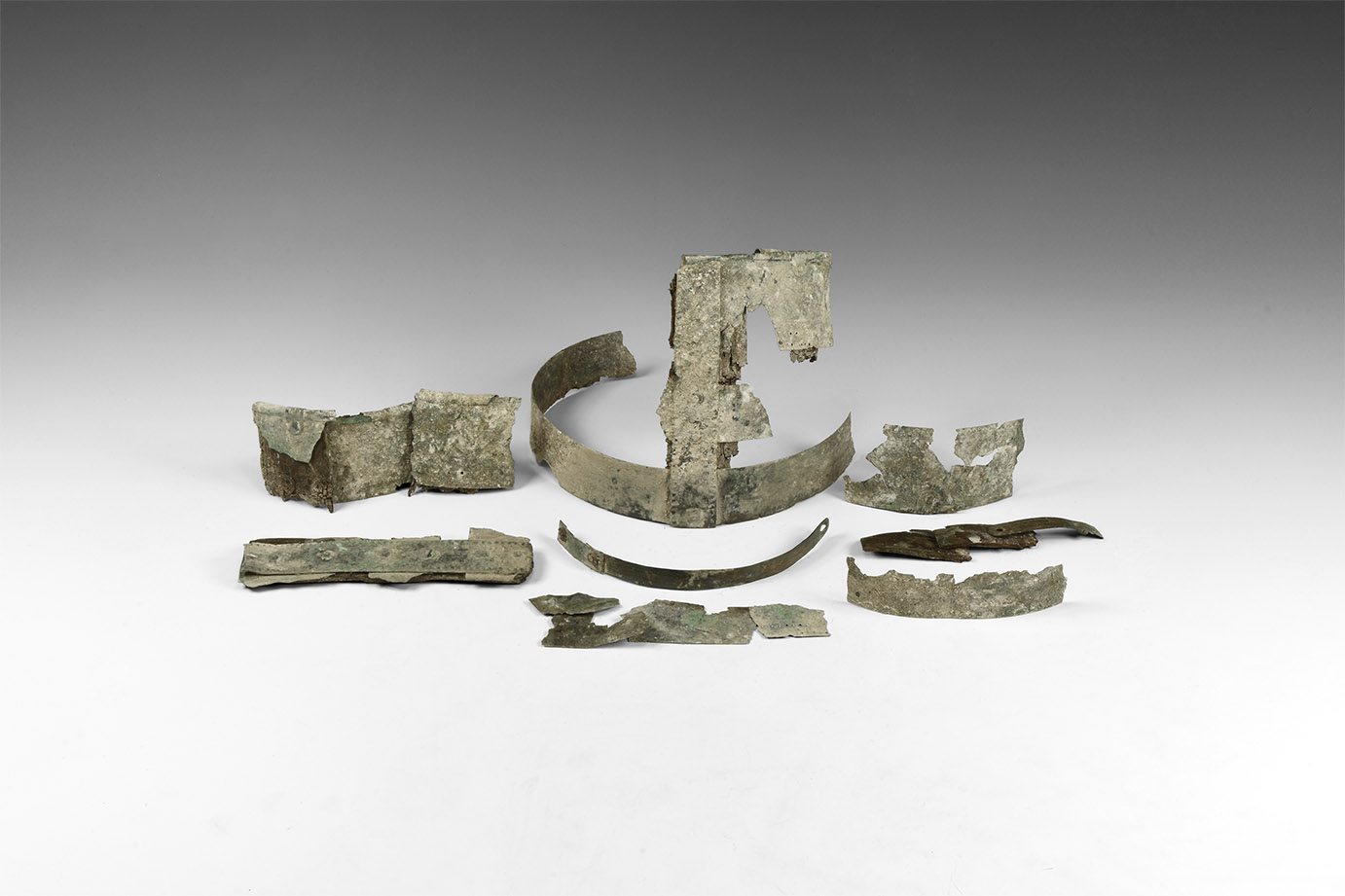
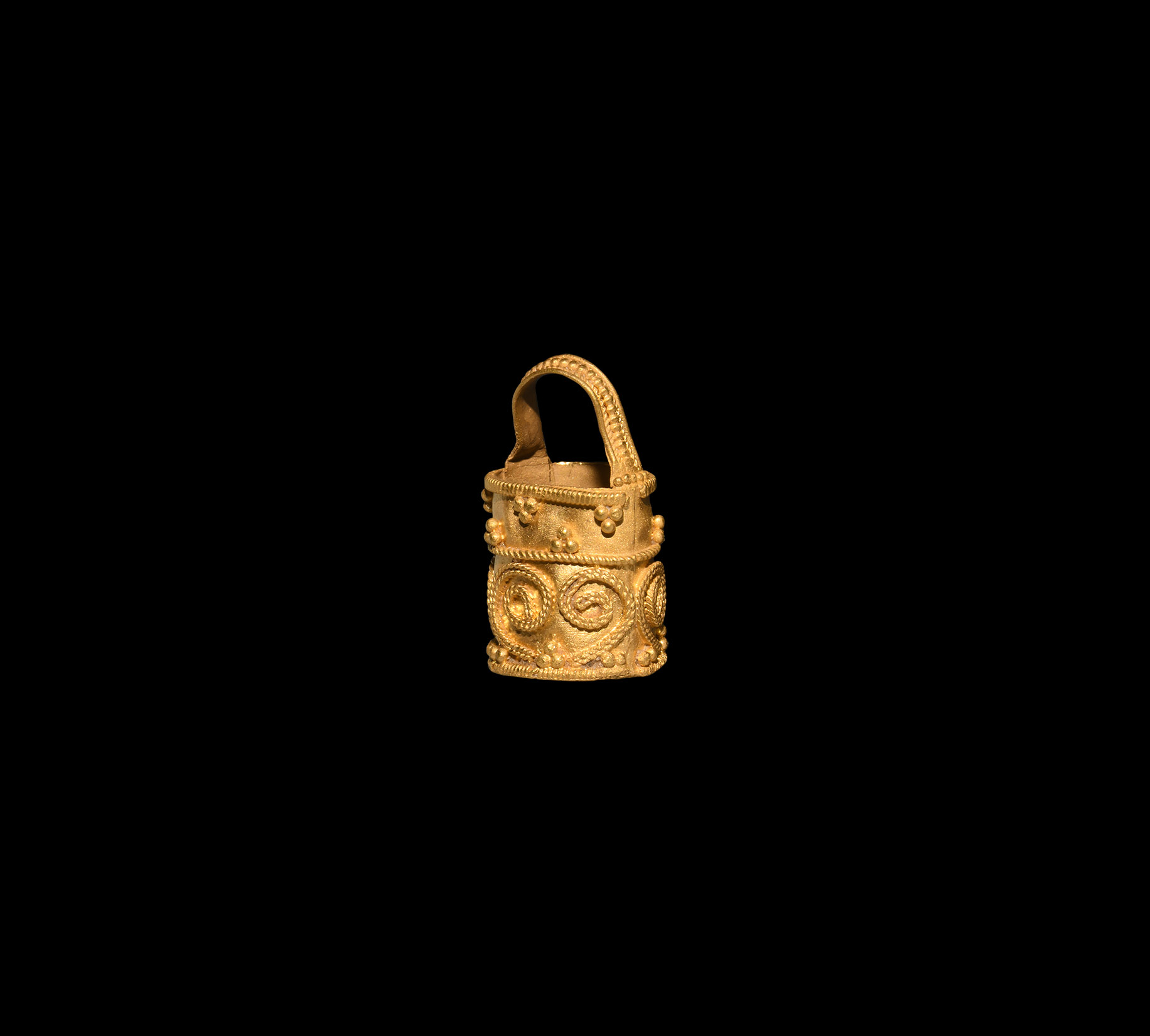
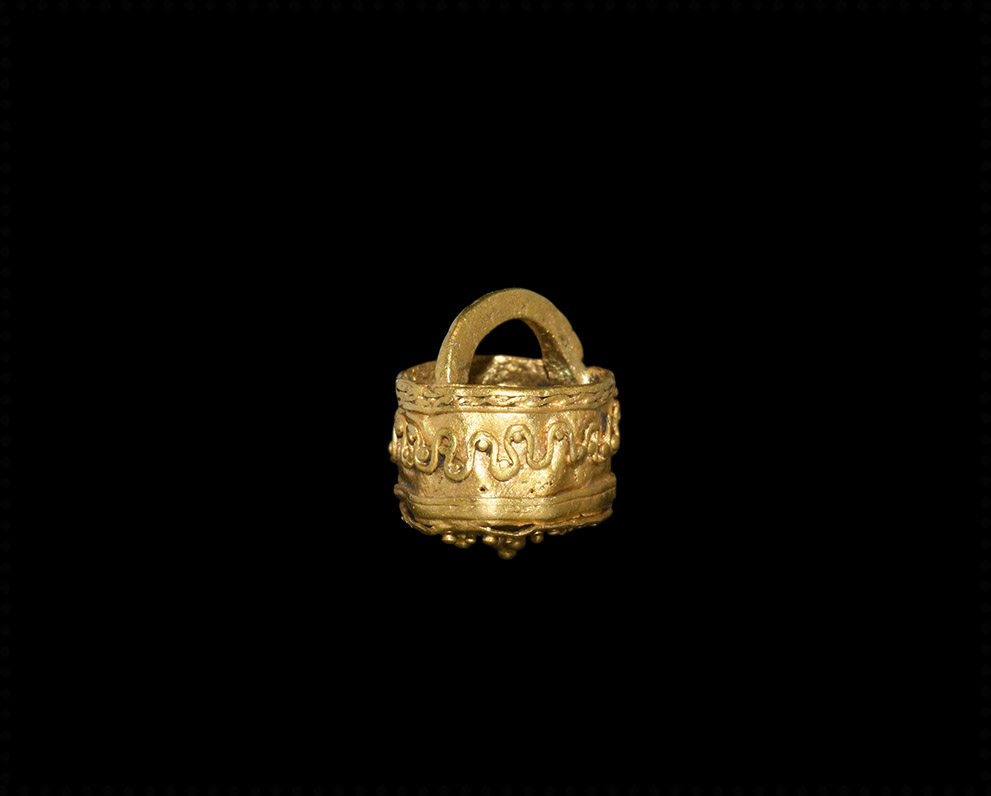
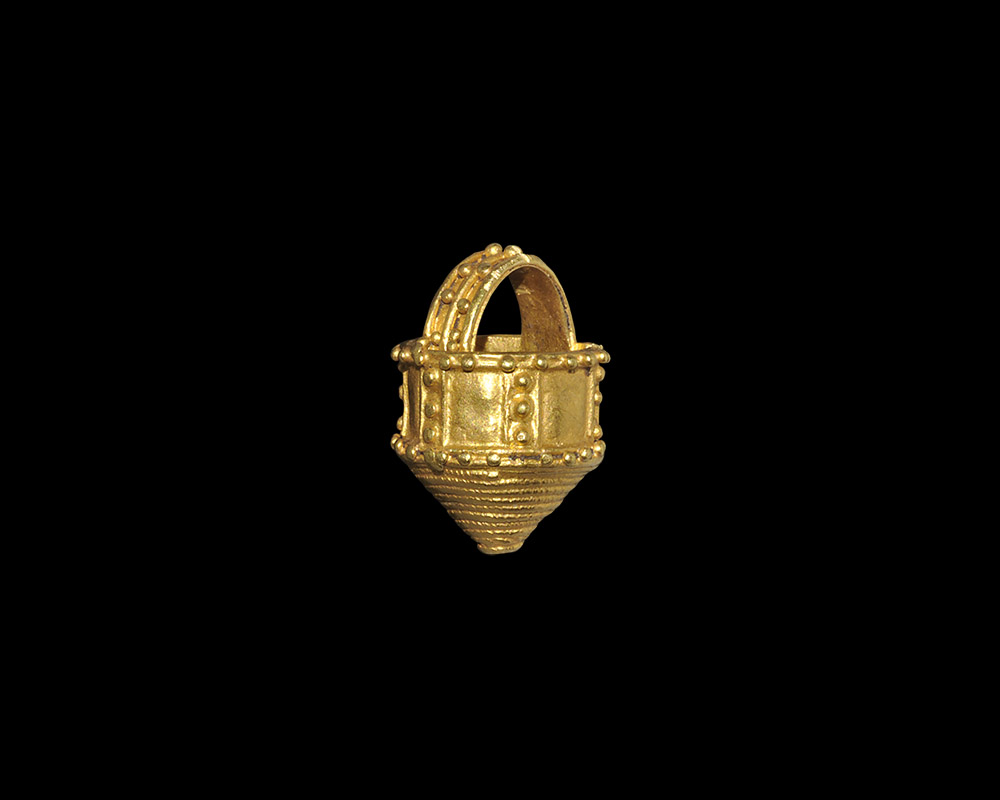
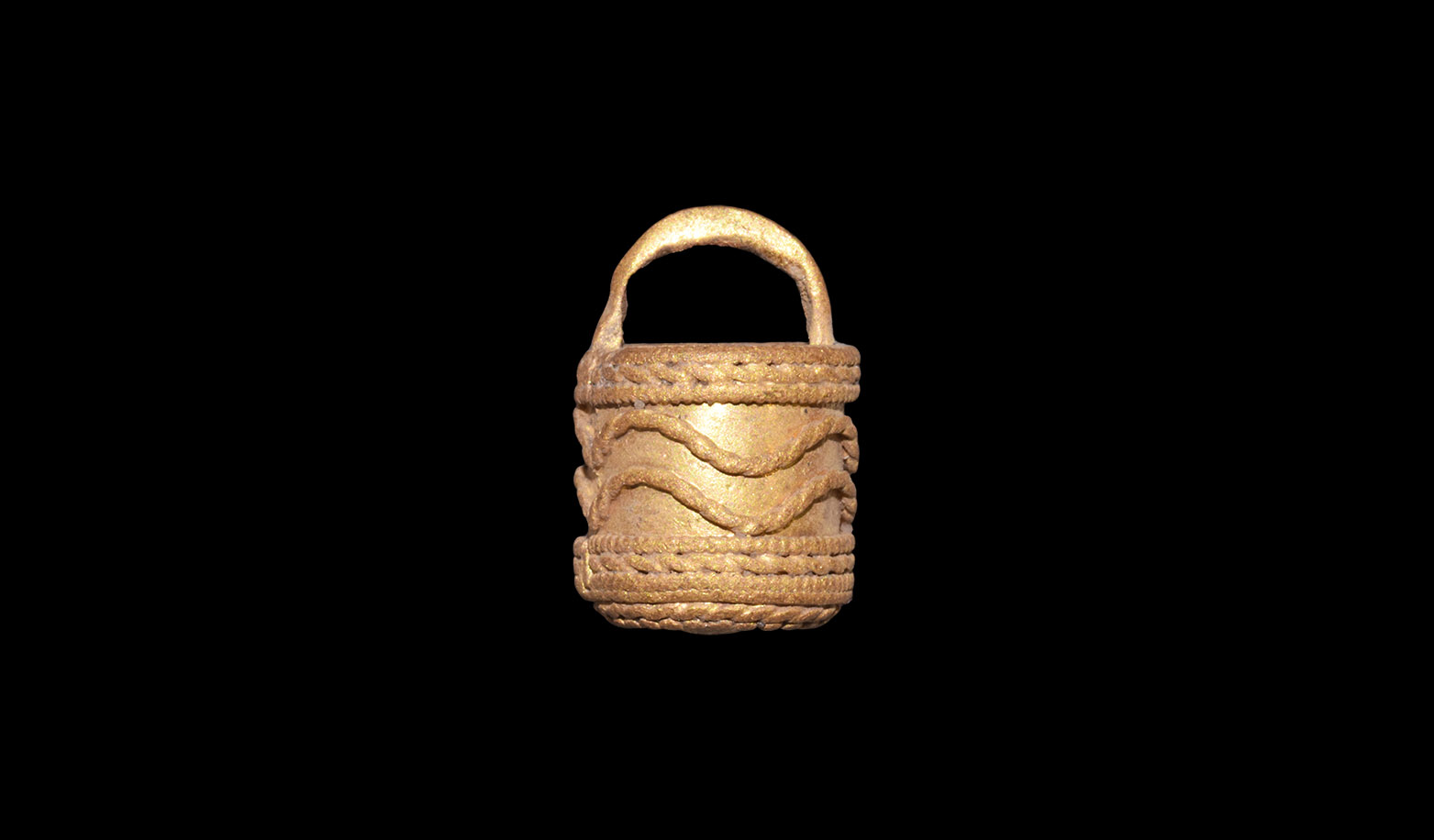
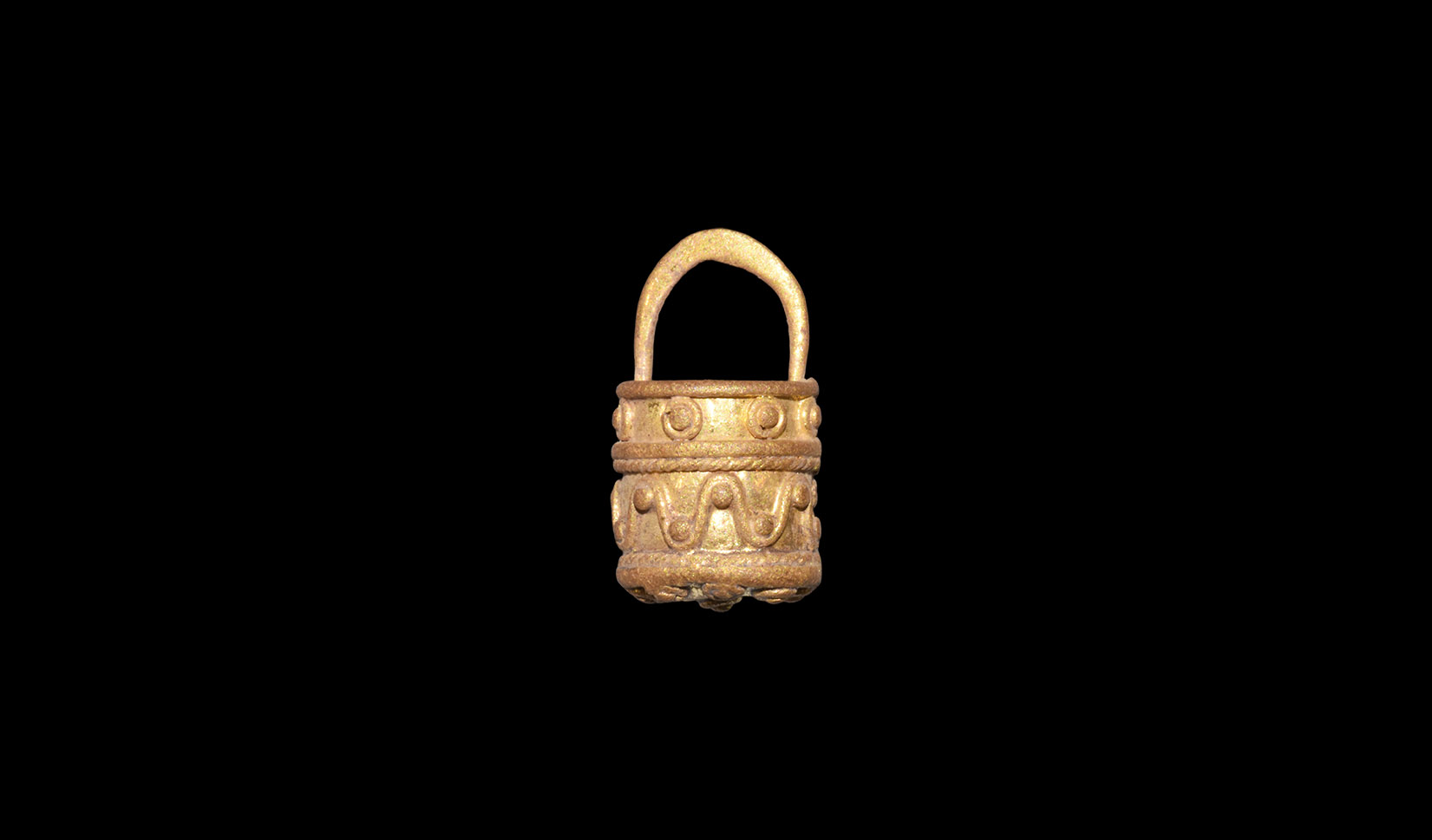
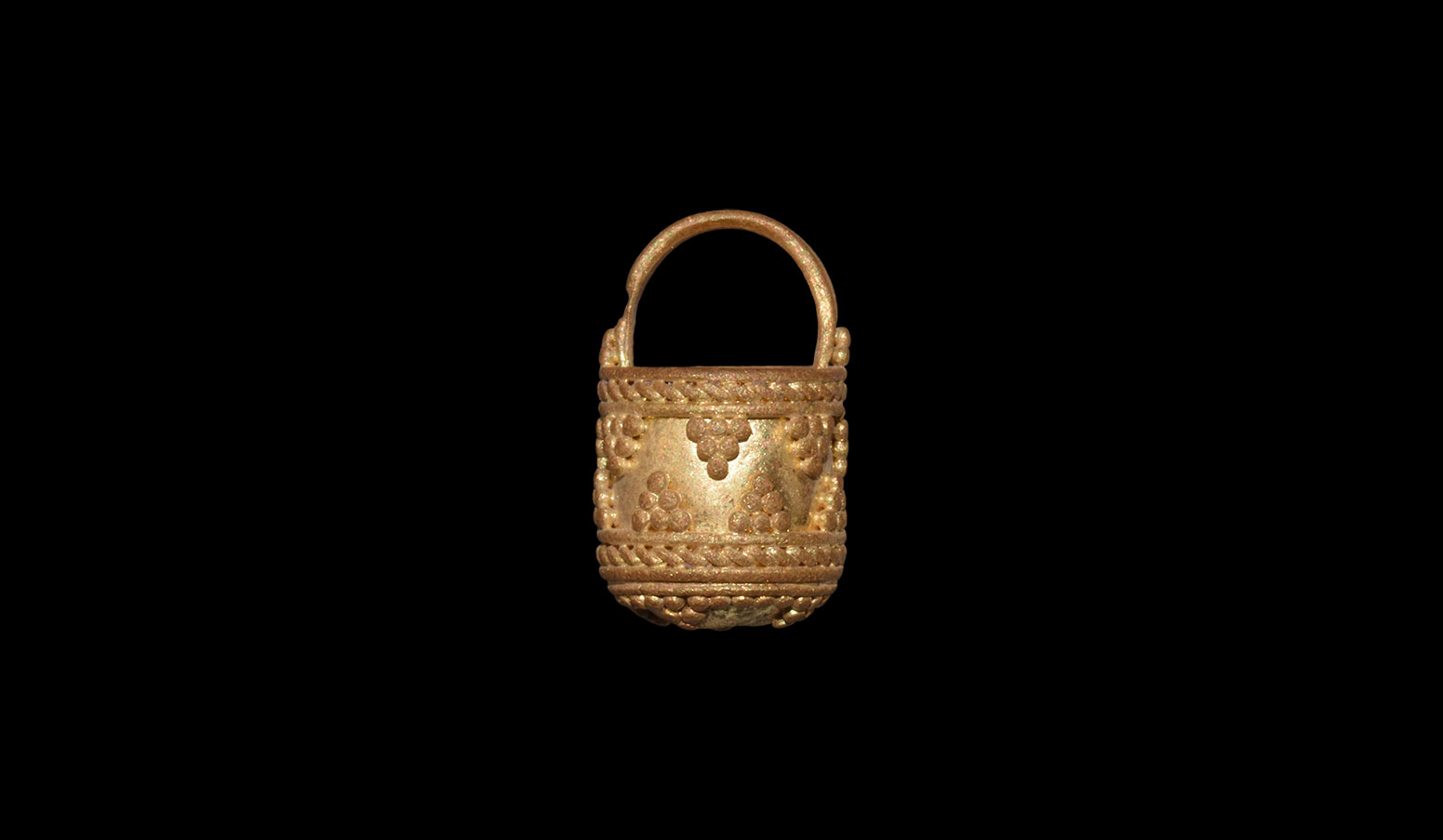
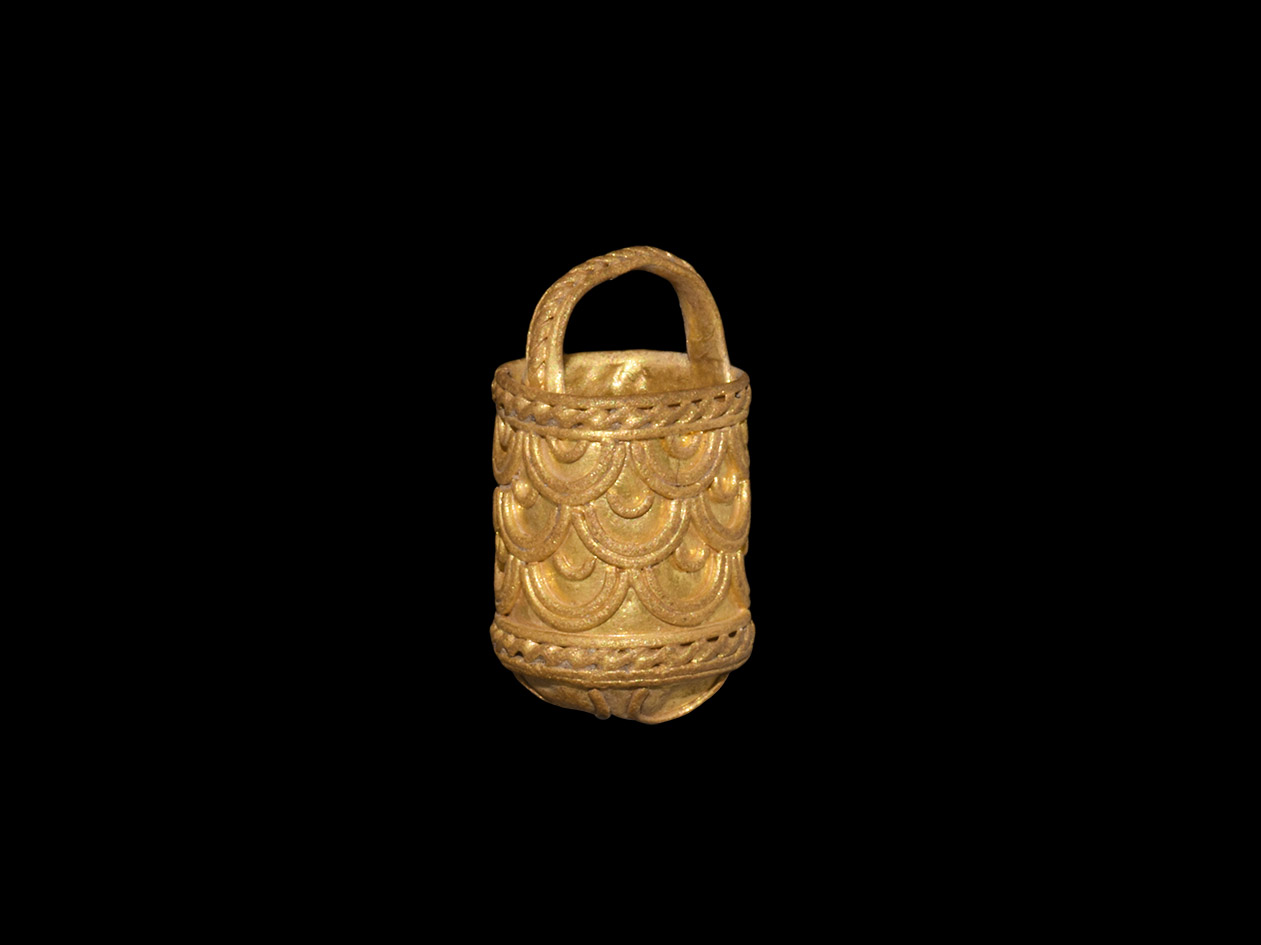
Try LotSearch and its premium features for 7 days - without any costs!
Be notified automatically about new items in upcoming auctions.
Create an alert